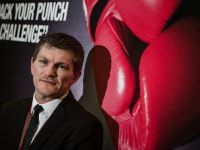13 of the world’s top architectural firms in sheikh zayed national museum design competition
11 countries represented in competition line up
Thirteen of the world’s top architectural practices from 11 countries are to enter the international design competition launched to secure an inspirational concept for the planned Sheikh Zayed National Museum in Abu Dhabi, the capital of the United Arab Emirates (UAE).
The museum, which will be built in the Cultural District of Saadiyat Island – the tourism, cultural and residential destination being created 500 metres offshore Abu Dhabi city - will honour the late Ruler of Abu Dhabi and UAE President, Sheikh Zayed Bin Sultan Al Nahyan.
“All 13 practices competing have been selected for their experience in delivering cultural and museum assets of world-class standing and for the breadth of international design discipline they represent,” said His Excellency Sheikh Sultan Bin Tahnoon Al Nahyan, Chairman of Abu Dhabi Tourism Authority and Tourism Development & Investment Company (TDIC), the name behind Saadiyat Island’s transformation.
The competitors are: Atelier Christian de Portzamparc of France; A.N. Tombazias & Associates of Greece; Bernard Tschumi Architects and Eisenman Architects of the USA; Jordan’s Dar-Al Omran; the UK’s Fosters + Partners Limited; Austria’s Hans Hollein Architekt; Mario Bellini Associati and M. Fuksa Arch of Italy; Canada’s Moriyama & Teshima Architects; Shigeru Ban Architects of Japan; Spain’s Ricardo Bofill Taller and Norway’s Snohetta.
Following a familiarisation trip to the UAE capital, which included a detailed briefing on Sheikh Zayed’s life, a tour of the 27 square kilometre Saadiyat Island and emphasis on the design criteria of environmental efficiency and sustainability, all 13 are now to submit their concept designs by fall this year.
The winning design will be chosen by a three-strong expert judging panel which includes: the UK’s Farshid Moussavi, a practicing architect and Professor In Practice in the Department of Architecture at Harvard University Graduate School of Design. A steering committee member for this year’s Aga Khan Architectural prize and a well-known design critic; Britain’s Peter Wilson, Director of the Royal Shakespeare Company’s redevelopment project and Head of Collections and former Director of Major Projects for London’s Tate Gallery. Finally from the USA Mohsen Mostafavi, Dean of Cornell University’s College of Architecture, Art and Planning.
“The jury composition reflects our desire to have a widespread of expertise,” explained Sheikh Sultan.
The Sheikh Zayed National Museum will span 130,000 square feet and feature five galleries individually devoted to UAE Heritage, the Environment, The Transformation of the Emirates, United Through Leadership and Education. The museum will also include an education centre, theatre, shops and a café and a visitor services area.
The Sheikh Zayed Museum will be an additional asset in Saadiyat Island’s Cultural District proposition which also includes the Guggenheim Abu Dhabi contemporary art museum, the Louvre Abu Dhabi universal museum, a Performing Arts Centre, a Maritime Museum and a Biennale Park with 19 pavilions devoted to culture and the arts. Four of the world’s most eminent architects – Frank Gehry, Zaha Hadid, Jean Nouvel and Tadao Ando - have created the concepts behind what is the most dramatic cultural statement ever conceived.
An exhibition on Saadiyat Island’s Cultural District and its museum and arts centre concepts is currently running at the Emirates Palace Hotel in Abu Dhabi. The museum is open to the public from 10am until 10pm daily. The exhibition offers a fascinating insight into the Abu Dhabi of tomorrow. It is unique in that it gathers together in one place the latest work of some of the most recognised architects of the 21st century.
Caption 1: Saadiyat Island’s Cultural District to be home to Sheikh Zayed National Museum
Caption 2: 13 of world’s top architectural firms in Sheikh Zayed National Museum design competition
About the competing architects:
Atelier Christian de Portzamparc:
Established by Pritzker prize winner Christian de Portamcparc the man behind the City of Music in Paris which houses the Post Modern-style National Conservatory of Music and Dance. Inspired by Corbusier, he is also the name behind the Dance School of the Paris Opera in Nanterre, the Café Beaubourg, Ungaro boutiques and the ‘ski boot’ corporate office of Credit Lyonnais in Lille
Bernard Tschumi Architects, USA
Based in New York and Paris, this practice is currently completing the New Acropolis Museum in Athens, the BLUE residential tower in New York city, the ECAL art school and a railway station in Lausanne, Switzerland. Recently built projects include the Athletic Center for the University of Cincinnati; the factory and headquarters for Vacheron Constantin in Geneva, Switzerland; and the School of Architecture at Florida International University in Miami, Florida. The practice opened in 1983 with an award-winning project for the Parc de la Villette in Paris, a 125-acre cultural park with 25 follies, pedestrian bridges, promenades, and outdoor facilities.
Dar-Al Omran, Jordan
Led by renowned architect Rasem Badran, DAR AL OMRAN has accomplished many projects that are considered as a civic focus in their communities. Rasem Badran (Founding / Partner) has won many awards including the Palestine Award for Architecture in 1997, the Arab Architect prize award from Arab Housing Ministers, sponsored by the Arab League in Cairo / Egypt 1997, the Aga Khan Award for Architecture for the design of the Grand Mosque, and the redevelopment of the Old City Centre in Riyadh, Saudia Arabia.
Eisenman Architects, USA
Eisenman's Wexner Center for the visual arts and fine arts library at Ohio State University received a national honour award from the American Institute of Architects. His social housing at Checkpoint Charlie in Berlin was honoured by the German government, which featured the project on a postage stamp commemorating the 750th anniversary of the city. At present, Eisenman is designing a museum for the Staten Island institute of arts and sciences at the St. George ferry terminal in New York.
Foster + Partners Ltd, UK
One of the UK’s leading architectural firms, the practice is strongly associated with its founder, Norman Foster, now Lord Foster, and has constructed many high profile glass and steel, high-tech buildings around the world. In particular it is known for its design of airport buildings. Projects include, New Supreme Court Building, Singapore, Palace of Peace, Astana, Kazakhstan, Hearst Tower, New York City, The Bow, Calgary, Croydon Tower, London.
Hans Hollein Architekt, Austria
Based in Vienna, Hans is the architect behind significant public buildings such as the Museum Abteiberg in Mönchengladbach, the Museum of Glass and Ceramics in Tehran, Iran, the Museum of Modern Art in Frankfurt, Germany and the ‘Vulcania’ Vulcano Museum in Auvergne, France. Hollein has received numerous awards, among them the prestigious Pritzker Architecture Prize and the Arnold W. Brunner Memorial Prize in Architecture, New York.
Mario Bellini Associati, Italy
The firm provides specialist services ranging from architecture and master planning to exhibition and museum design. In the numerous countries in which it operates including Australia, Germany, Japan and the USA, MBA forms targeted alliances (joint ventures or collaborative agreements) with competent local architecture practices and/or engineering firms. Many of Mario Bellini designs are now in the Permanent Collection of the Museum of Modern Art in New York. Since the 1980s he has worked chiefly as an architect in Europe, the United Arab Emirates, Japan, USA and Australia.
M Fuksas Arch, Italy
Based in Rome, Paris and Frankfurt, M Fuksas Arch’s most notable works are the New Trade Fair Milan, Italy, the Congress Hall in Rome and the award-winning Archives Nationales Pierrefitte sur Seine at Saint Denis, Paris, France.
Fuksas’ works have earned him many accolades, including Honorary Fellowships at the Royal Institute of British Architects, Cavaliere di Gran Croce della Repubblica Italiana, and the American Institute of Architects.
Moriyama & Teshima Architects, Canada
This is one of Canada's premier design oriented architectural firms. Its extensive portfolio of projects include commercial, institutional and cultural projects in over a dozen countries. Currently, the firm's work ranges from several large-scale projects integrating technology and innovative environments for working and learning with substantial design, to a new 18,000 square feet Buddhist temple. In addition to its work in architecture and urban design, Moriyama & Teshima Architects has also been recognised for its environmental planning project, receiving awards from sources such as Progressive Architecture Magazine and the Waterfront Center in Washington, DC.
Shigeru Ban Architects, Japan
The practice of award-winning Japanese architect Shigeru Ban, renowned for his ecological and humanitarian designs. Nominated by Time magazine as a 21st century, innovator in architect and design, Shigeru Ban is the name behind Zurich’s celebrated Rietberg Museum and the New School of Business, American University of Beirut.
Ricardo Bofill Taller, Spain
This is the firm responsible for headquarters such as Christian Dior, Cartier, Decaux, Axa, Shiseido, Bank One and the Donnelley building. The studio has established an international reputation with urban planning for cities such as Paris, Luxembourg, Warsaw, Prague, Madrid and Barcelona.
Some of its prestigious cultural facilities are: The Arsenal of Metz, France, Shepherd Music School at Rice University in Houston, Catalonia National Theatre in Barcelona, Centro Cultural de Prado in Valladolid.
Snohetta, Norway
This firm offers architectural services for cultural and commercial buildings, parks and gardens, and bridges, roads and public spaces. Projects include Bibliotheca Alexandrina in Egypt and the New Opera House in Norway.
A.N. Tombazis and Associates Architects:
Renowned for his ‘Less is More’ design approach, Alexandros Tombazis is a pioneer of bilclimatic architecture and design utilising renewable energy. His is the name behind many of the facilities built for the 2004 Olympic Games in Athens, the Bin Madiya Mosque in Dubai, the Athens Hilton and the Stavanger Concert Hall in Norway. Structures designed to allow optimum sunlight to stream in and bioclimatic design features are two of the most important threads that connect the various projects.
About Saadiyat Island:
Saadiyat Island - which translates from Arabic as Island of Happiness - is the largest single mixed-use development in the Arabian Gulf. The 27 square kilometre natural island - half the size of Bermuda - lies only 500 metres offshore Abu Dhabi island - the capital city of the United Arab Emirates. Saadiyat Island is being developed into a complete visitor and residential destination.
Saadiyat Island represents one of the most important development opportunities in Abu Dhabi's history. The island, which has 30kms of water frontage and boasts many natural eco-features including mangrove forests, is being developed as a strategic international tourism destination and marks a new era in the rapid evolution of Abu Dhabi, the largest of the seven emirates which form the UAE Federation.
Saadiyat Island will be developed in three phases with total completion scheduled for 2018. The masterplan envisages seven highly individual districts and includes 29 hotels, including an iconic 7-star property, three marinas with combined berths for around 1,000 boats, museums and cultural centres, two golf courses, civic and leisure facilities, sea-view apartments and elite villas.
Saadiyat Island is expected to be home to a community of more than 150,000 people - the same population size as Chang Mai in Thailand, Oxford in the UK or Hollywood in the USA.
Saadiyat Island will be linked to the main Abu Dhabi island and the Abu Dhabi mainland via two, 10-lane freeways making the destination easily accessible to Abu Dhabi International Airport, which will be just a 25 kilometre drive away.
Saadiyat Island is being developed by the Tourism Development & Investment Company (TDIC), an independent public joint stock company of which Abu Dhabi Tourism Authority is the sole shareholder. TDIC's strategy is to dispose of development land on the island to private investors who will each develop their sites in accordance with the masterplan and supporting planning regulations and design guidelines.







